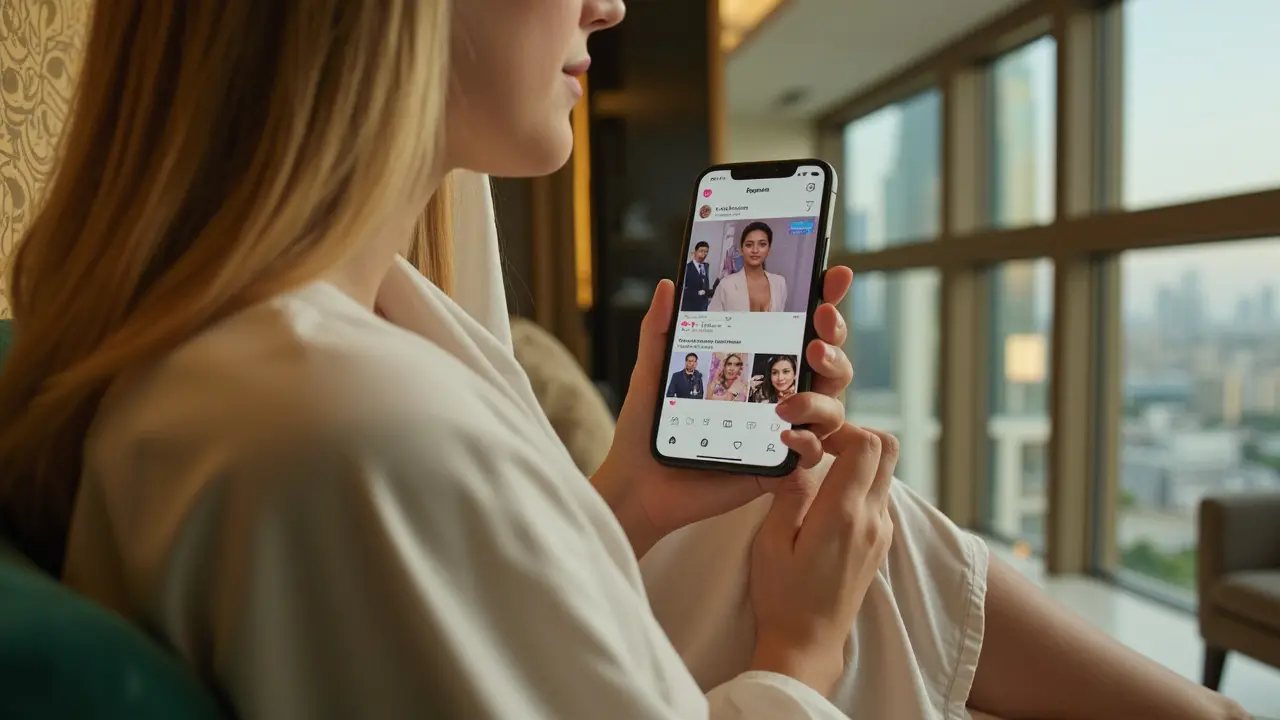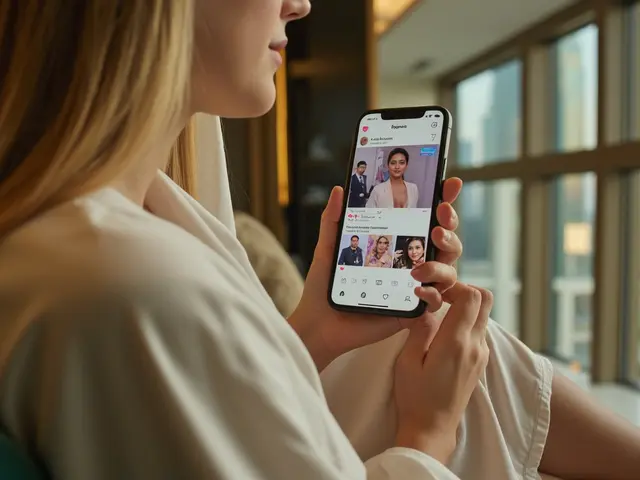Which Celebrities Have the Most Fake Followers on Instagram?

Ever checked out a celebrity’s Instagram or Twitter and raised an eyebrow at their gigantic follower count? You wouldn’t be alone. It’s wild how some stars can pull in tens of millions of followers overnight, right? But here’s the kicker—many of those loyal fans might not be real at all. The world of celebrity social media is crawling with bots, ghost accounts, and fake fans. There’s even a thriving business behind buying followers just to look more popular. And if you’re thinking this sounds shady but kind of hilarious, wait until you see what’s really going on behind the scenes.
Key Points: The Most Important Fake Follower Facts
- Kylie Jenner is often listed as the celebrity with the most fake followers, with some reports showing nearly 40% of her Instagram audience isn’t real.
- Soccer superstar Cristiano Ronaldo and singer Taylor Swift are not far behind when it comes to inflated Instagram numbers.
- Fake followers include bots, purchased accounts, ‘dead’ users whose accounts are inactive, or people who never actually engage with posts.
- Some celebrities—knowingly or unknowingly—pad their stats to land bigger brand deals or seem more influential.
- Several studies and audit tools (like IG Audit, HypeAuditor, and SparkToro) keep track of fake follower epidemics, but numbers change all the time.
Direct Answer: Which Celebrity Has the Most Fake Followers?
In practically every 2024-2025 fake follower ranking, Kylie Jenner takes the crown. According to HypeAuditor’s most recent audit, she’s clocking in with around 105 million Instagram followers—but about 40% of them are fake, according to their methods. That’s a mind-blowing 42 million ‘fans’ who probably aren’t even real people. Close behind is Cristiano Ronaldo, with a similarly gigantic chunk of bogus or inactive accounts on his follower list.
This doesn’t mean Kylie or Ronaldo bought all those followers themselves—sometimes, bots just latch onto big names automatically. Still, it’s a huge reminder that not all digital fame is as it seems. Taylor Swift’s numbers have also drawn attention, with about 35% of her following suspected to be fake or inactive. When you add up the numbers, it’s clear that these followers aren’t boosting any real engagement—they’re just propping up the stats to look impressive.
Take a look at this quick comparison of known celebrity ‘fake follower’ rates, as per HypeAuditor’s late-2024 audit:
| Celebrity | Total Followers | Fake Follower Percentage | Estimated Fake Followers |
|---|---|---|---|
| Kylie Jenner | 105M | 40% | 42M |
| Cristiano Ronaldo | 120M | 38% | 45.6M |
| Taylor Swift | 95M | 35% | 33.25M |
| Ariana Grande | 94M | 32% | 30.08M |
| Kim Kardashian | 90M | 34% | 30.6M |
Kind of wild, right? So next time you see those massive numbers, you’ll know there’s a lot more going on than meets the eye.
Comprehensive Guide to Celebrity Fake Followers
Social media has changed the game entirely for celebrities. Now, being “famous” on Instagram or TikTok isn’t just about being spotted by paparazzi—your follower count can make or break big business deals. Companies hand out multi-million-dollar endorsements based on how much “influence” a celebrity seems to have. The bigger their audience, the bigger their paycheck. But here’s where things get sketchy. Not all followers are equal. Some are actual fans who interact, comment, and share, while others are just hollow numbers—random bots or dormant users created only to pad the stats.
Let’s break down exactly what happens. There are businesses that literally sell followers for pennies each. You can buy 10,000 followers for less than the cost of a pizza. These “fans” don’t care about the celebrity—they’ll never like or comment, they’ll never buy a product, and they’re basically just empty shells with profile pics. It’s like hiring cardboard cutouts to fill an empty concert hall and convince sponsors you’re really, really popular. Sounds a bit like cheating, doesn’t it? But here’s the twist: sometimes celebrities don’t even do the buying themselves. Bot networks target any account with lots of activity, automatically following anyone who’s making waves. So even genuinely popular celebs can end up with thousands—or millions—of fake followers completely out of their control.
Why does this even matter? For starters, when a celebrity’s actual influence doesn’t match up to their numbers, brands who pay them to promote stuff end up wasting their money. Fake audiences don’t buy new sneakers or stream that single on repeat. It’s literally money down the drain for brands. And for the rest of us, it’s easy to feel a bit bummed when we think everyone else is instantly attracting millions of friends online, when a lot of it’s just smoke and mirrors. Some social media platforms are fighting back—they’ve started purging fake accounts and warning users about suspicious activity—but it’s a game of whack-a-mole. For every fake account they delete, a new batch pops up somewhere else.
Fans get stuck in the middle of this circus. Following real stars used to mean getting tiny glimpses into their everyday lives. Now, it can feel like just another numbers race. People start to question their own worth on social media, wondering why their posts don’t get as much traction. But when you realize a giant slice of the “competition” is fake, it might just take the sting out of it. You’re not behind the curve—you’re just playing a different, much more honest game.
If you’re still curious about how celebrities’ numbers add up, check out free tools like Social Blade and CrowdTangle. They show trends for followers, growth spikes, and engagement rates. Tools like HypeAuditor and IG Audit will even analyze an account for fake followers. Just run a celeb’s handle and see what turns up. Most of the time, you’ll find the engagement rate—likes, comments, shares—doesn’t stack up to the number of followers, which is the biggest giveaway of all.

Spotting and Understanding Fake Followers
Let’s get practical. How do you tell if a celebrity’s followers are fake? It’s a bit like detective work, but there are a bunch of signs anyone can use. First up: check their likes and comments. If someone has 50 million followers but only gets a few thousand likes or weird, generic comments, something smells fishy. According to Instagram stats, the average ‘like’ rate for big influencers is around 1.6%. Anything much lower suggests there’s a bunch of fakes propping up the numbers. Another red flag is sudden growth spurts. If a celebrity’s account jumps by 10 million followers overnight for no good reason, it probably isn’t because they went viral with a picture of their breakfast.
One dead giveaway is the comment quality. Ever scrolled through and spotted comments like “Nice pic!” “So pretty!” or just loads of emojis? Bots usually aren’t that great with words. Real fans leave genuine comments, inside jokes, or even ask questions. Bot comments are bland, repetitive, and totally impersonal. Engagement rates tell the real story. Even with loads of followers, if only a tiny fraction interact, it’s probably a fake. That’s why brands are getting smarter about using tools to analyze engagement, not just total numbers, before they shell out for advertising deals.
The big celebrity names themselves sometimes drop hints. In 2019, actress Priyanka Chopra posted a viral tweet joking about her “invisible” fans after her follower count dropped by millions during one of Instagram’s bot purges. Justin Bieber’s Instagram was once purged by nearly 4 million ghosts when the app tried to clear out fake accounts. Plenty of stars were pretty open about it. Nobody likes seeing their numbers take a nosedive, but for a lot of celebrities, it’s better to have real fans than agents or brands calling out their ‘fake’ fame.
If you want to know who else lands near the top of the fake follower charts, look at other big influencers and pop stars. Ariana Grande and Kim Kardashian both have nearly a third of their social media followings marked as fake or non-active, making them regulars in every study on the topic. Even top athletes like Lionel Messi and LeBron James attract huge numbers of bots. If bots were real fans, these celebs would be running entire countries by now.
Want to keep it real on your own account? Resist the temptation to buy followers. Even though it sounds like a quick fix, it never helps in the long run—your engagement will tank, your stats will look suspicious, and people will catch on. Instead, focus on actually connecting with people. Brands, too, have started prioritizing micro-influencers—folks with smaller but more genuine and active audiences. Turns out, 10,000 real fans are way more valuable than a million fakes.
Why Fake Followers Matter (and How to Handle the Fallout)
Now you might be wondering, besides impressing clueless sponsors or stroking egos, does it really matter if a celebrity has lots of fake followers? A few years back, maybe not. But now, with the influencer industry pulling in billions each year, trust and authenticity are king. A single big endorsement deal can be worth more than most of us make in a decade. When brands realize that 40% of those supposed fans are fake, they get pretty cranky.
The Federal Trade Commission in the US and similar bodies around the world are now watching. Celebrity endorsements based on fake traffic can be considered false advertising, and the rules are getting stricter. One recent case saw a celebrity’s deal canceled when the sponsor realized most of their “influence” was just bots. Algorithms are starting to demote accounts with suspiciously inflated numbers, too, making it harder to keep up the charade for long. Even regular users are wising up, calling out stars for fake stats in their comment sections.
For celebrities, it’s becoming a bigger gamble. There’s big money at stake, but there’s also reputation. Getting caught with a field full of ‘ghosts’ can embarrass even the biggest stars. Some now hire specialist agencies to clean up their audience, removing as many fake and inactive followers as possible. After all, a brand’s worst nightmare is paying six figures for a sponsored post seen only by bots.
Here are a couple of real-world success stories—Selena Gomez once purged her Instagram and lost over a million followers overnight, and her engagement rates actually improved. She ended up with an audience that cared, not just numbers pumping up her ego. It’s a move more and more stars are making.
If you’re someone who cares about being genuine online (and who doesn’t?), it’s wise to watch out for the ‘fake follower’ trap. Not only are brands starting to pull the plug on fake fame, but regular users are getting a lot better at spotting it too. Authenticity wins every time—it just takes a little patience and a whole lot less drama.
A quick recap table for the skeptics out there:
| Celebrity | Instagram Followers | Engagement Rate | Fake Account Cleanup? |
|---|---|---|---|
| Kylie Jenner | 105M | 1.5% | No |
| Selena Gomez | 80M | 2.5% | Yes (2019) |
| Cristiano Ronaldo | 120M | 1.8% | No |
| Priyanka Chopra | 60M | 2.2% | Yes (2019) |
Watch these numbers over time and you’ll see the trend: those who clean up their followers often build a tighter, more loyal audience in the long run.
Keeping It Real: Tips to Spot, Avoid, and Clean Up Fake Followers
You don’t have to be a top influencer to get caught up in bot drama. Anyone can buy followers, but more than ever, people are realizing it’s a losing game. If you’re curious about spotting bots and fake accounts, here are a few simple tricks. First, just check who’s following you. If you see accounts with no posts, weird usernames (think: user_123456), or profile pics that look like stock photos, you’ve probably spotted a bot. Next, look at your engagement. Are your likes and comments growing in step with your followers, or are you gaining followers with no change on your posts? Major red flag.
If you’ve accidentally attracted bots or bought a few followers back in the day (hey, we’ve all made mistakes), it’s not too late to clear them out. Instagram and Twitter both let you manually remove followers. There are apps like Cleaner for IG or Followers Track that help you spot and block bots automatically. It takes a while, but it’s worth it for a healthier account. For celebrities with millions of followers, the process is a little more complicated—they often hire agencies or use AI-driven tools to clean things up in bulk.
There are even social etiquette tricks you might not know. When you spot a celebrity with sky-high stats but low engagement, don’t be shy about calling it out in the comments. It’s a growing trend—fans asking stars directly about their inflated stats. A little honesty goes a long way. Some celebs appreciate their fans holding them to account. Others quietly start purging the ghosts to avoid more drama.
Last, if you’re a brand or business thinking about working with an influencer, never trust follower count alone. Dive into the ‘quality’ of their audience—the strongest sign of real influence isn’t a big number, it’s a community that talks, shares, and cares. Check audience locations, too: if 70% of a US-based singer’s followers are from outside her actual fanbase countries, something’s off. Smart brands now use audits as part of due diligence—those who don’t risk spending ad dollars invisible to the people they actually want to reach.
In short, the celebrity with the most fake followers right now is Kylie Jenner. But she’s far from alone—and fake fans are only getting easier to spot. In a world where nearly a third of top celebrity Instagram followers might not even exist, the real gold standard is authentic engagement. That’s where the lasting influence lies, for stars and for us regular folks alike. So the next time you’re scrolling through and feeling a little FOMO, remember: sometimes it’s all just for show.

